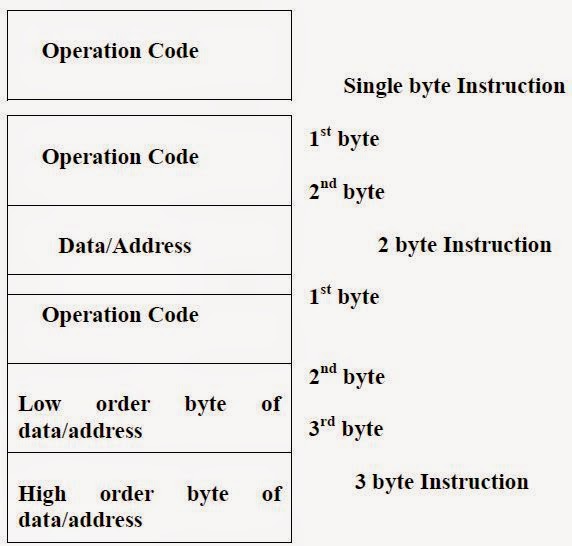Program
- A set of instructions that perform a task is called a program usually a program is stored in the memory.
- The processor then fetches the instructions comprising the program from memory one at a time and perform the desired operations.
- The computer is under control of stored program,except for the possibility of external interruption from the operator or by I/O devices connected to the machine.
- The operation of the CPU is determined by the instructions it executes.
- These instructions are referred to as machine instructions or computer instructions.
- The collection of different instructions that the CPU can execute is referred to as the CPU‟s instruction set.
- Example Program
MVI B, X
MVI A,Y
ADD B
STA 5000H
HLT
Assembly Language Programming
 |
| Types of Instructions |
- An assembly language program is written using suitable combinations of the instructions drawn from the instruction set.
- An instruction may be 1, 2 or 3 bytes in length.
- In any of these three types of instructions
- The first byte indicates the operation to be performed.
- The second and third bytes if present contain either the operand or address of the operand on which the operation is to be performed.

Comments
Post a Comment